The Nikon Zf is a great camera, with a beautiful retro aesthetic, satisfying manual controls, excellent image quality, and a wide array of modern features packed into the body. However, one area where the Zf is a bit lacking is in the camera’s ergonomics. One downside to emulating the brick-shaped cameras of the 70s and 80s is that they are shaped like, well, bricks. As such, there isn’t much to hold onto with the bare Zf, with just a slight bump on the right side to grasp. If you carry your Zf with a wrist strap like I do, you may find your thumb and hand cramping a bit after shooting for a while, especially with heavier lenses.
I was going to do this breakdown as part of my Nikon Zf review, which is in-progress and coming….sometime. However, as I now have experience with all four five of the major grip options for the Nikon Zf, I thought I’d break it out into its own detailed article.
EDIT 7/4/2024: Since first publishing this article, Neewer has released a second grip that modifies its original grip. This grip, designated CA079, makes a few subtle changes to the front grip and adds a very well done rear thumb grip as well. I have added this grip (though photos of it were done a little hastily) and my thoughts on it towards the end of the article. You will want to pay attention to this option. Edits I have made to the article are in italics.

I’m looking at what are the four major accessory grips on the market as of February 2024 (and a fifth that came out in the summer of 2024). There are a few other options out there as well, such as leather half-cases that have integrated grips, but I’m focusing on those that just add the grip and a plate to the bottom of the camera. These are the Smallrig L-Shaped Handle, the Neewer L-Shape Handle, the ‘sold under many names including iWood’ carved wood handle grip, Nikon’s own official Zf-GR1 accessory grip, and Neewer’s newest CA079 grip.
All four five grips have an Arca-Swiss style dovetail integrated into the bottom plate for easy tripod use, and all four five have cutouts around the bottom door to access the battery and SD cards. All four therefore also create some degree of difficulty in removing those SD cards. Each grip attaches to the base of the camera via a single screw that goes into the tripod socket, and all but one has a little flip up ring to allow you to secure that screw just using your fingers.
Let’s dive into each of the grips, and then I’ll let you know my thoughts in comparison to each other. It goes without saying that discussions on comfort and such are quite personal, as everyone’s hands are different sizes and you may hold your camera differently than I do. What works for me may very well not work for you.
Smallrig L-Shape Handle for Nikon Zf
First up is the Smallrig “L-Shape Handle for Nikon Zf.” This grip is being marketed as the sort of de-facto standard grip for the Nikon Zf here in the United States and Europe, as Nikon and Smallrig have a close relationship for this product, with some Nikon Zf bundles even being offered with the Smallrig grip.
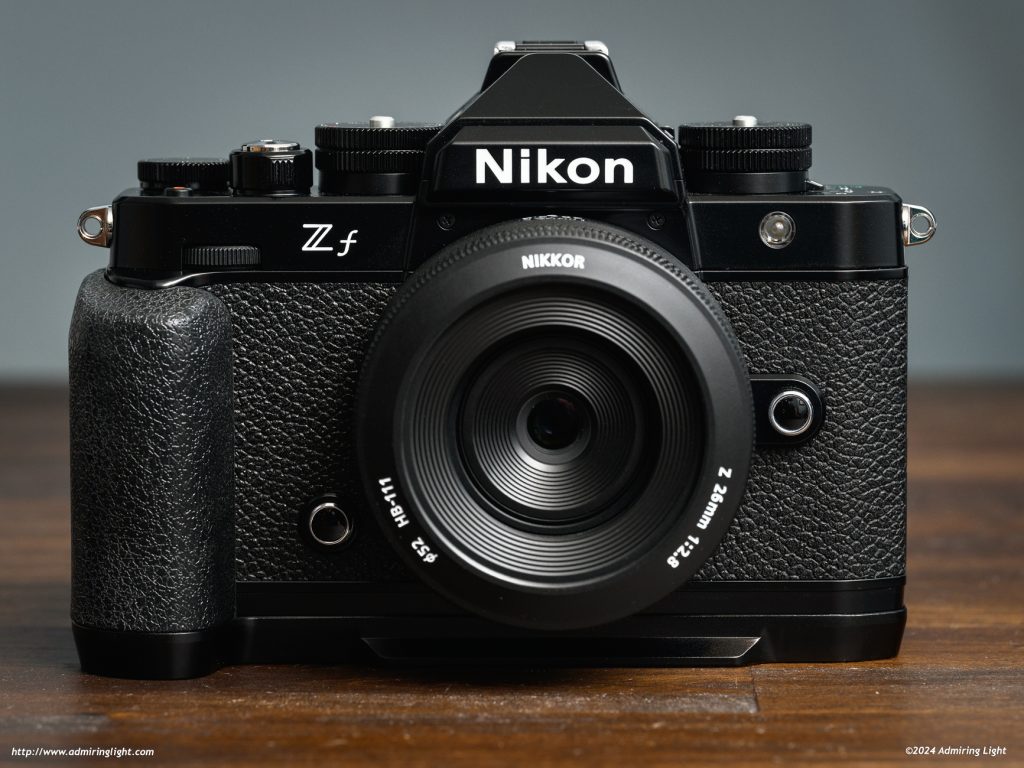
The Smallrig grip’s baseplate is made of high quality anodized aluminum with Smallrig’s usual high-end finish. The plate slightly overlaps the base of the camera and has a tacky rubber pad that sits between the baseplate and the camera body. The Smallrig grip is the second lightest of the four here, weighing in at just 96g. The Arca-Swiss dovetail on the Smallrig grip extends along the rear of the camera for its entire length until the battery compartment bumpout, while the front edge of the dovetail is shorter and centered, rendering portions of the dovetail somewhat unusable, though this area is still sufficient to allow for some positioning of the camera in a tripod head clamp.
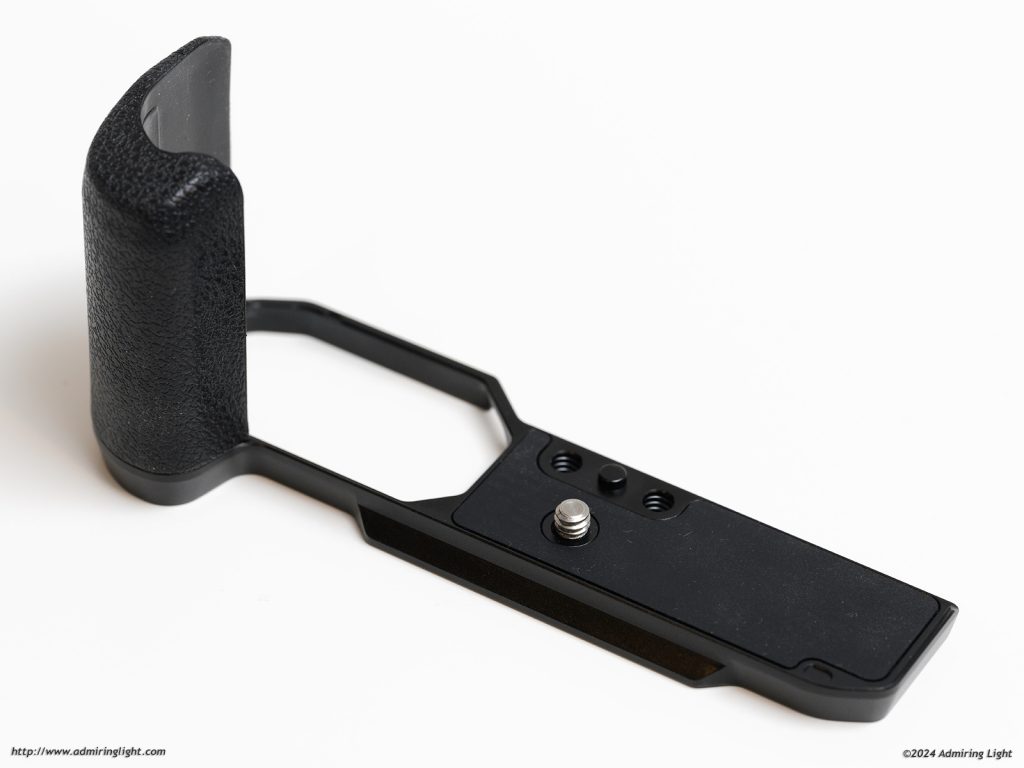
The handle itself is made of a very grippy textured silicone rubber with extends substantially from the front of the camera and wraps around to cover the right side of the camera. The rubber used is simultaneously very comfortable and a little unpleasant, as it’s just not the texture and feel I’m used to when holding a camera. While the initial comfort when picking up the camera is excellent, when carrying the camera over time the extreme tackiness of the grip rubber can actually wear a bit on your skin. The additional friction of the grip material also somewhat hinders operation of the front dial.
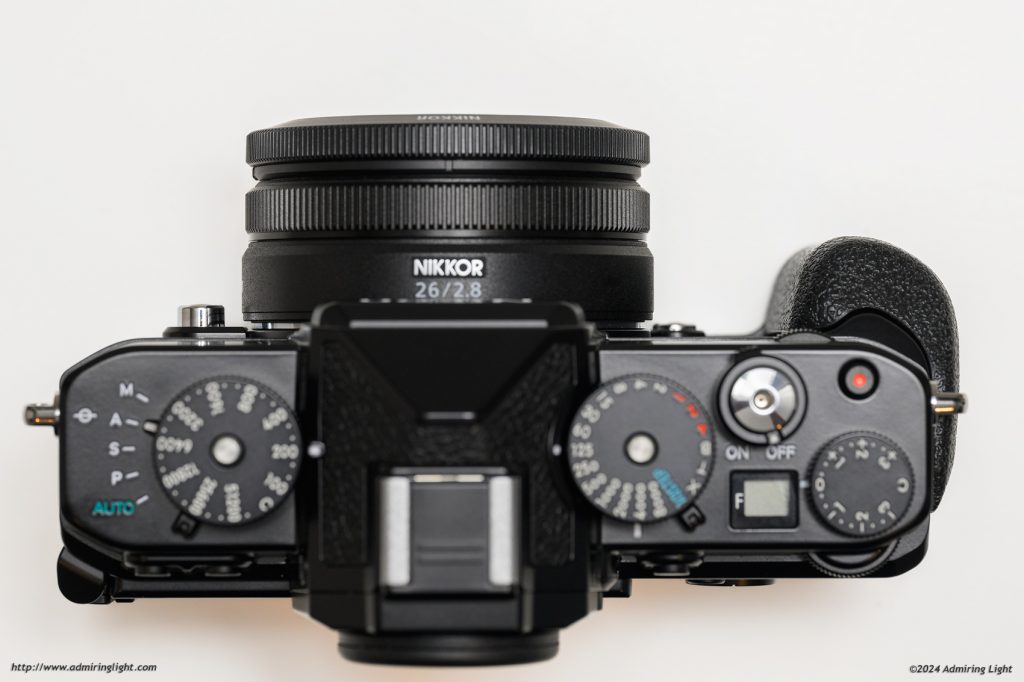
Aesthetically, the Smallrig has nothing exciting going on. It’s just a plain hunk of rubber at the edge of the camera. The Smallrig grip costs a reasonable $38, but is sometimes on sale for even less. Overall a very solid entry with a few downsides.
Neewer CA063 L-Shape Handle for Nikon Zf
The Neewer grip is the most affordable on this list, at just $26 on Amazon, and is constructed of anodized aluminum. The bottom plate is of good quality, but the finish on the anodizing isn’t quite as high quality as that of the Smallrig or Nikon grips. The Neewer grip also has a small rubber pad on the baseplate between the grip and the bottom of the camera. The Neewer grip is the second heaviest grip of the four, at 103g. The Arca-Swiss style dovetail runs the entire length of the grip once you get past the battery compartment, allowing for excellent flexibility when positioning the camera on your tripod head.

The handle itself has some design flare, with a molded plastic texture set into the aluminum that visually matches the camera very well. It also has a metal edge with a bright red stripe, to give your Zf a bit more of that Nikon F3 look. The front grip is a little smaller than that of the Smallrig or Wood grips, and has an angled top that increases initial comfort when handling or shooting the camera.
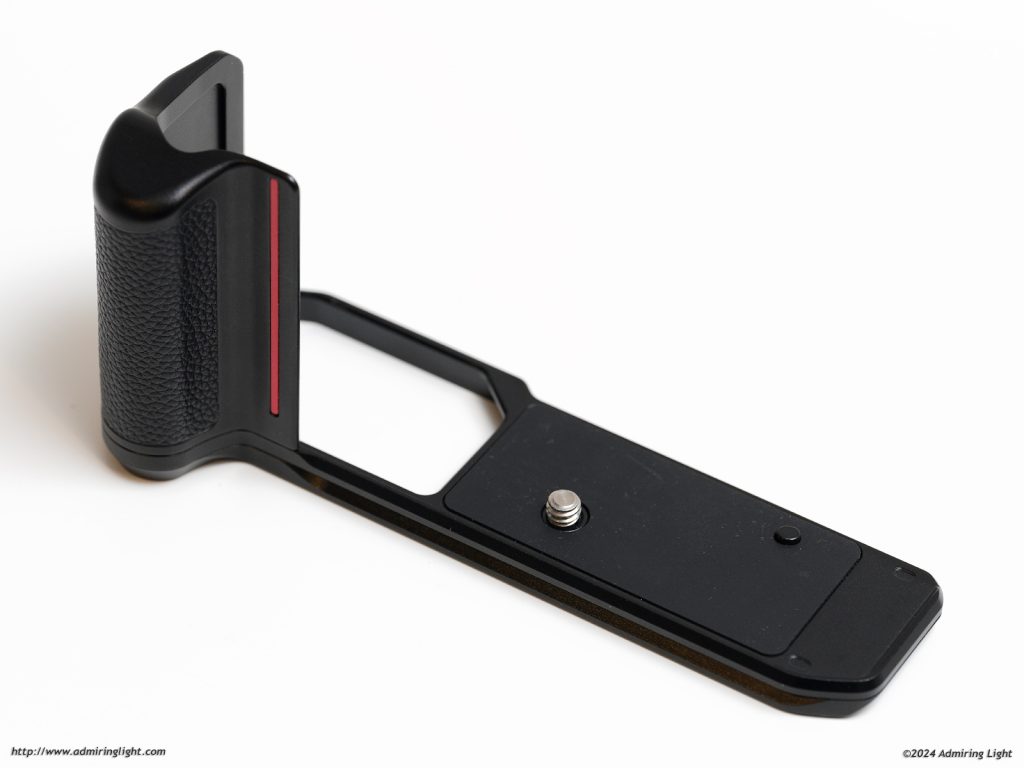
The grip wraps around the right side of the camera, much like the Smallrig grip. The smooth top of the Neewer ensures there are minimal issues turning the front dial, though the height makes it a little tighter to operate than with the bare camera.

On the negative side, the materials used on the Neewer grip are rather slick, and so you end up squeezing your hand a bit tighter when using the Neewer than with some of the other grips in this roundup, which increases fatigue when using the grip for long shoots. Overall, a good grip, especially given the low price point.
Sculpted Wood Hand Grip
This grip doesn’t seem to have a real brand name. These are sold on eBay by several different sellers, and the iWood store sells the same grips, though at double the price as what you can get them for on eBay. Others have purchased both the iWood and eBay sold grips and found them to be identical.
This grip can be had in two different shapes: a plain wood block with angled top, or the ‘sculpted’ grip, which has two indentations for fingers. It’s also available in four different wood finishes for your preference. Mine is the sculpted grip in the ebony finish. The grip sells for around $69 on eBay, or $128 through the iWood store.

The baseplate of the wood grip is again made of anodized aluminum, though it appears to be a softer alloy than the others, and has a lower quality finish. Mine is still in good condition, but I do have one small mark where the finish has been nicked. The wood grip is the lightest of the four grips at just 82g. The Arca-Swiss dovetail is by far the smallest on this grip, with about two inches available dead-center, and that’s it. As such, it’s harder to use this grip on a tripod when shooting vertical, as sometimes the camera can interfere with the legs of the tripod when dropped 90 degrees over. This is also the only grip that does not have an integrated thumb screw to attach it, but rather relies on only a screwdriver or coin to turn the screw of the baseplate into the camera.

One thing I haven’t mentioned yet is that all of the grips have an angled corner at the bottom right rear of the grip to help prevent the grip from digging into the heel of your hand. The angle on the Smallrig and Neewer grips is quite smooth and comfortable, while the angle on the wood grip is a bit sharper, and so this does tend to dig into your palm a bit.

The handle itself is made of polished wood, and it both looks and feels fantastic. Handling, however, is a bit of a mixed bag. When carrying the camera around in a non-shooting position, the grip is extremely comfortable. The finger indents provide excellent purchase and the grip is sized very well. However, in the shooting position, it’s not particularly comfortable, as the height of the grip forces your fingers to push up against the strap eyelet more than with the other three grips. Overall, I really like this grip for it’s aesthetics and materials, but it’s not one I’d reach for if I were going to be relying on the Arca-Swiss plate for regular tripod use.
Nikon Zf-GR1
Yes, Nikon does indeed make a first-party accessory grip for the Zf, however it is only (as of this writing) available for sale in the Asian market, leaving the rest of the world to rely on third-party grips. The Zf-GR1 can be had through Japanese sellers on eBay if you’re willing to pay a bit of a premium, but avoid those that are asking outrageous markups. I obtained mine for $144, while ignoring the listings for $170 or even as crazy as $285.
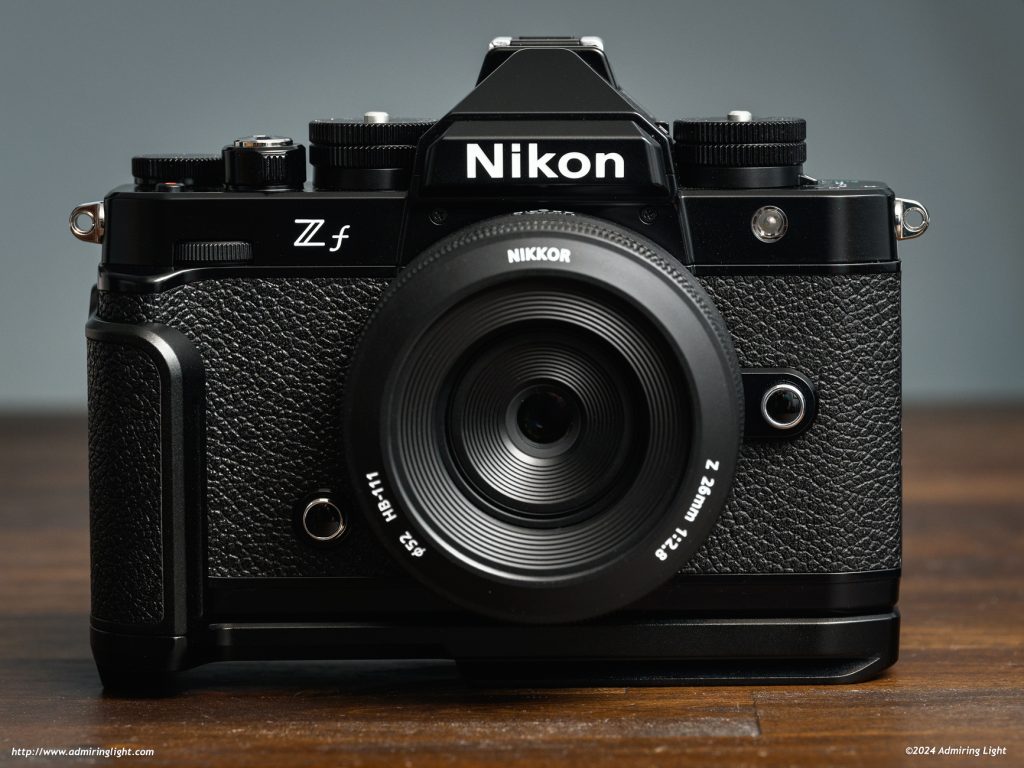
The Zf-GR1 is constructed entirely of metal, save for the rubber pad at the baseplate/camera interface, and the leatherette installed around the grip. The Nikon is the heaviest of the four grips at 122g. The anodized baseplate is thicker than the other grips, which I thought I would dislike, but it actually provides a couple of advantages. One large benefit to the thicker baseplate is that the camera can still mount to a tripod head while using the FTZ version 1 adapter with F-mount glass, while none of the others can do so.

The baseplate thins out around the battery compartment to reduce the impact on removing the card and battery, and this area is roughly the same thickness as the Neewer and Smallrig plates. The Arca-Swiss dovetail runs the entire length of the baseplate outside of the battery compartment, but because the dovetail extends below the area reserved for the battery door, there is actually even more room to attach the camera to a tripod head than with any of the other grips.

The Zf-GR1 takes a very novel approach when compared to the others, as this isn’t just a front accessory grip, but one that wraps around the camera and adds a small thumb rest to the rear of the camera as well. The front grip is smaller than any of the others, with a decidedly retro aesthetic that beautifully matches the design of the camera. The leatherette that is used on the grip is the exact same pattern and material as on the camera body, which helps it blend in very well.
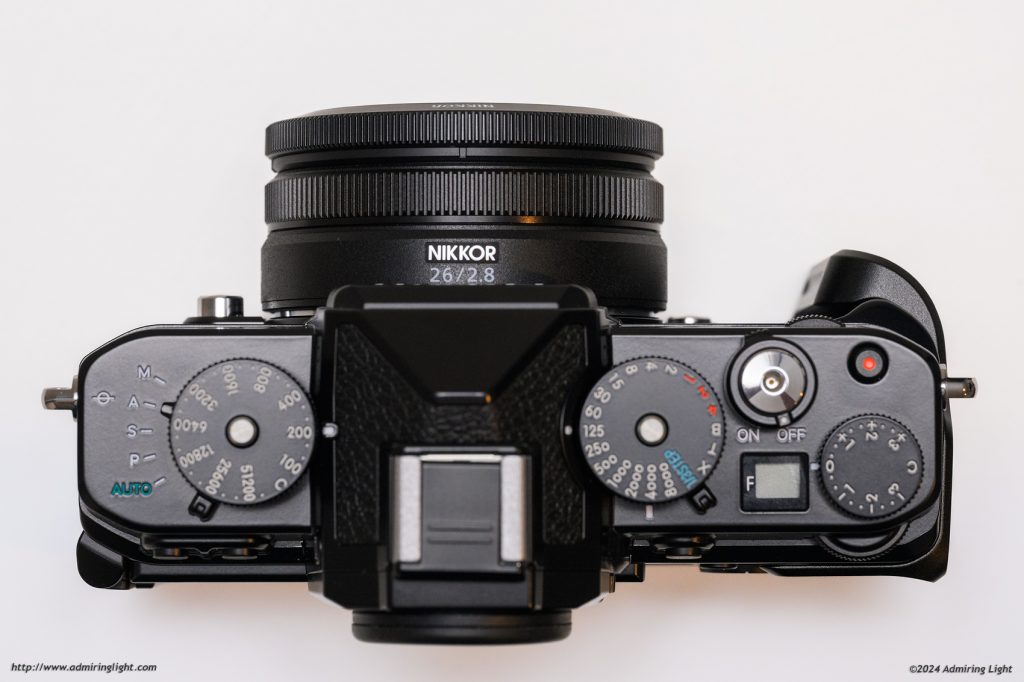
While the front grip is smaller than the others and the rear thumb rest only small and subtle, the design is such that the Zf-GR1 is very comfortable in the hand. The slightly shorter handle allows your fingers to fall naturally over the top, much like the grip on the Fujifilm X-T1, and there is zero interference with the front command dial. The front portion doesn’t actually sit flush with the camera, but this isn’t a problem, and actually gives you a bit more to hold on to with your fingertips, as does the ridge in the metal at the edge of the grip. The portion that wraps around the back also is continuous to the bottom of the baseplate, so that small bump out that is present on all the other grips is completely missing here, making it the most comfortable grip for the rear of your hand as well. However, I do think those with really big hands or those who hold their camera a bit differently than I do may find the Nikon grip more cramped than the others.
I was a little surprised how much I enjoyed the feel of the Zf-GR1, and as you’ll see below, it is the most well-balanced of all the options.
Neewer ‘Slim Formfitting’ grip, CA079
This grip is a new entry released in June of 2024, and frankly, it fixes almost everything I disliked about the CA063 grip mentioned above. The changes are subtle in some ways and drastic in others. The front of the grip aesthetically looks largely the same, though keen-eyed observers will notice the grip is slightly more squared off. This allows for a greater level of grip when the camera is being carried in one hand at your side. However, the big change is that the grip that wraps around the side continues to the rear like the Nikon grip and provides a rather prominent thumb rest.

Unlike the Nikon grip’s thumbrest, however, the prominence of the new Neewer grip’s thumb hook makes it significantly easier to hold, and the slick nature of the grip (which still persists) matters very little given the extra purchase offered by the thumb grip. It makes all the difference in the world, and makes this, in my opinion, the most comfortable overall of all the grips.
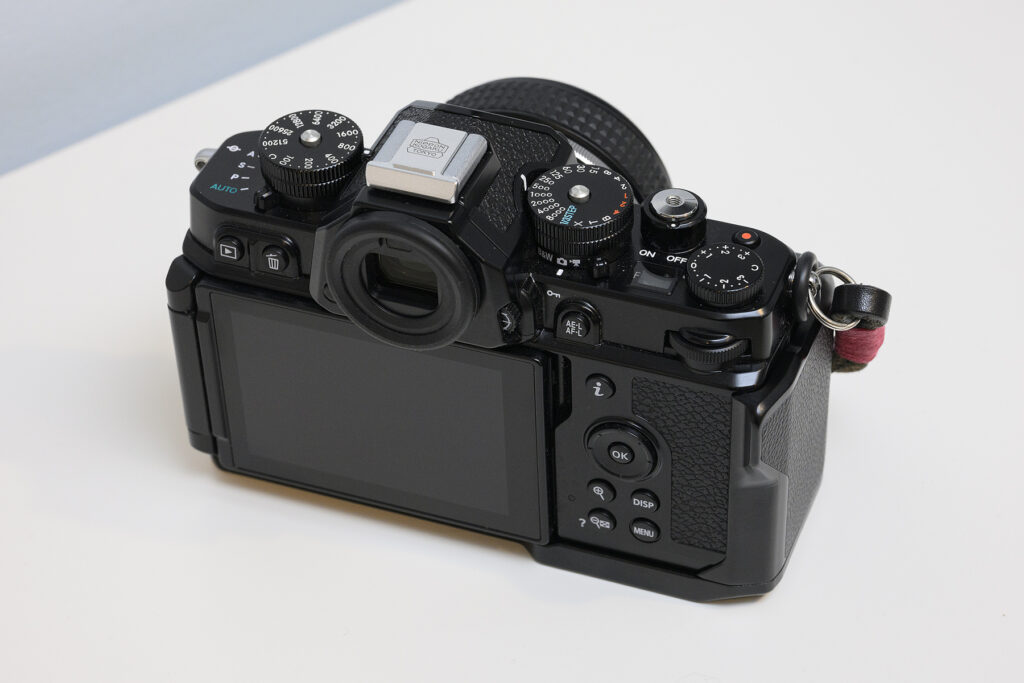
The dovetail is still long, though there appears to be slightly more space at the rear of the battery compartment making this grip also the easiest to access the SD card during use. It’s a winner.

Rankings and Comparisons
So having used all the grips, what do I think? Previously, I felt there wasn’t really one grip that stood out as the best in every area. With the new Neewer, that has mostly changed. However, what works best for me may differ from your needs, and so which one you should get depends somewhat on what your priorities are. It’s also worth noting that none of the grips are truly bad in any of these areas. Below are my personal rankings based on six criteria.
| Comfort (Shooting) | Comfort (Carrying) | Aesthetics | Dovetail | Build Quality | Price |
| 1. Neewer CA079 | 1. Neewer CA079 | 1. Wood | 1. Nikon | 1. Nikon | 1. Neewer CA063 |
| 2. Smallrig | 2. Wood | 2. Nikon | 2. Neewer CA063/CA079 | 2. Smallrig | 2. Neewer CA079 |
| 3. Nikon | 3. Smallrig | 3. Neewer CA063/CA079 | 4. Smallrig | 3. Neewer CA063/CA079 | 3. Smallrig |
| 4. Neewer CA 063 | 4. Nikon | 5. Smallrig | 5. Wood | 5. Wood | 4. Wood |
| 5. Wood | 5. Neewer CA 063 | 5. Nikon |
Looking at the above, you can see that the new Neewer grip is quite strong in most everything. Let’s briefly break down the results.
Comfort (Shooting)
Why two comfort categories? Well, because the grip shape impacts how you hold it in your hand, and naturally your hand shifts a bit when you are actively shooting compared to when you are simply walking around with the camera resting on your fingertips. The shooting comfort category encompasses feel when composing and shooting, and the comfort of operating the controls.
When it comes to shooting comfort, the new Neewer grip takes the top spot. The front grip is easy to hold, and while a little slicker than the Smallrig, the prominent thumb grip ensures a solid and very comfortable hold. The Smallrig grip is soft and comfortable, but even though it causes a little more difficulty in turning the front dial than some of the other options, the shape and comfort make up for it.
The Neewer CA063 grip is also quite comfortable when you first pick up the camera to shoot, but fatigue is higher due to the slick nature of the finish. The Nikon Zf-GR1 falls naturally to my hand as well, and feels very nice on the fingers as well as at the rear of the camera. The wood grip is the least comfortable in the shooting position due to its slightly awkward shape.
Comfort (Carrying)
I carry my mirrorless cameras with a wrist strap, and with the strap lug positioning on the Zf, I slide the strap between my index and middle fingers when shooting and carrying. When walking around, I tend to have my middle, ring and pinky fingers supporting the weight of the camera on the grip, while my thumb holds the back.
Here, the new Neewer grip again takes the top spot. Having something to hold onto with both fingers and thumb eases the pressure from tightly gripping the camera while walking around. The wood grip is also quite nice to hold. The sculpted contours on the wood grip provide excellent purchase for my fingertips while walking around with the camera, and the good feel of the wood shines in this scenario. The Smallrig grip is not too far behind, but the rounded shape makes it not quite as good for staying on the fingertips, and the very high friction of the rubber can actually be a little irritating on my skin after long walks. The Nikon grip also has a good feel on my fingertips while carrying the camera, and the small thumb rest lets me walk around with a much lighter squeeze than on some of the other options. However, the smaller area to hold may cause some minor discomfort when carrying the camera for a long time.
Aesthetics
This one is, of course, entirely subjective, and many of you may disagree with my rankings here. To my eyes, this is a clear win for the wood grip. The excellent lines, beautiful finish, and classic feel just make the camera look amazing with the wood grip mounted.

My second favorite in this category is Nikon’s Zf-GR1, which, while subtle, blends into the camera extremely well with the perfectly matching leatherette and simple lines. It doesn’t look tacked on, and feels like part of the camera.
Either of the two Neewer grips look good too, with a simple and elegant design, but also with the addition of the bold red F3 style stripe. If you have nostalgia for the F3, this may be your favorite look, but I tend to prefer the more understated options.
Finally, the Smallrig brings up the rear here. It’s a plain black rubber blob that sits at the edge of the camera. Functional, but boring.
Dovetail
If you never use your Nikon Zf on a tripod, or if you don’t use a tripod head with an Arca-Swiss style quick release (which you should, but that’s a different topic for another day), you may not care about this portion. But for anyone who is going to use the camera for tripod work as well as handheld work, the addition of a built-in Arca-Swiss style dovetail is a very nice feature to have.
In this category, the Nikon and the Neewer grips take the top spots, with a dovetail that runs the entire length of the grip, save for the area around the battery compartment. The Nikon’s is a little better for tripod use due to its extended depth, as it doesn’t have a hard stop at the battery compartment like the Neewer, and it can be used while adapting an F-mount lens using the FTZ version 1 adapter.
The Smallrig grip is also quite good here, but the dovetail on the front stops before you get to the end of the camera, which allows for less flexibility in camera position on the head. Finally, the Wood grip’s dovetail is the worst of the four, with just the central part of the baseplate containing a dovetail, which severely limits positioning flexibility.
Build Quality
First things first: all four five grips are actually constructed quite well, and I would have no qualms whatsoever about using any of them for daily use with regards to construction. All are tightly assembled and feel nicely made.
The best constructed grip is from Nikon. The Zf-GR1 is made of solid metal, and the anodized finish is excellent. The leatherette is top-notch, and even the securing screw feels the best, with very tight tolerances and smooth operation, with a high quality checkered rubber pad at the grip/camera interface.
Next best is probably the Smallrig, with a very nicely finished aluminum baseplate with smooth high quality anodizing. The Neewer grips are also very well built, with the main grip portion being made of strong durable metal, and a thin profile with secure attachment, though the lower quality plastic leatherette and slightly lower quality anodizing drop them just a touch behind the Smallrig.
The Wood grip comes last, though it’s still a well built grip. The Wood portion itself is outstandingly made, with a lovely finish and great feel, but you can tell that the aluminum used for the baseplate is softer and lower-grade than that used in the Nikon and Smallrig grips. It also flops around a bit during attachment, until the nub that prevents twisting finally seats. It also includes a cheap slotted screw for attachment rather than one with an integrated thumb grip.
Price
The only objective category: The original Neewer and Smallrig are both very affordable, at $26 and $38 respectively, while the new Neewer grip slots in between them at $37. Looking at the rankings, this the new Neewer and the Smallrig pretty high in the value category as well. The Wood grip is fairly pricey at $69 (or $128 if you opt to buy it from iWood), and it ranks low on several of the subjective lists too – but man does it look good, and while it isn’t as comfortable as the Neewer CA079 or Smallrig grip, it does a good enough job there that the aesthetics may win out for you.
The Nikon, at least outside of Japan, is by far the most expensive, at around $145 through eBay. Is it worth the money? Only you can answer that. I do think it’s the worst value of the bunch, and I don’t think the premium price for NA users really gives you that much more in the way of operation or comfort.
Conclusion

If you average my rankings of the five grips, the Neewer CA079 comes out on top with an average ranking of 2, while the Nikon finishes second with an average of 2.7. The Neewer CA063 is third with an average of 3.0, while the Smallrig finishes fourth with an average of 3.2. The Wood grip comes in last with an average ranking of 3.7.
I think for most people, the new Neewer CA079 is the one to get. It’s my personal favorite of the five grips, and it is strong in all categories. It’s reasonably attractive, affordable, has a nice long dovetail and slim height, while also being the most comfortable overall with its excellent thumb grip and well shaped front grip. For those who want a cushier feeling, the Smallrig is also a good option. While it is the most boring looking of the grips, it does what it is supposed to without breaking the bank. While the Wood grip ranked last in my rankings, it’s still a nice grip, due to its good carrying comfort and outstanding aesthetics. I also quite like the Nikon Zf-GR1. Sleek, relatively comfortable to shoot with and carry, well built and versatile. However, it’s by far the worst value, and with the new release of the Neewer also adding a thumb grip, it makes the Nikon a far less attractive option.
The original Neewer CA063 ranks third here, but honestly, I think it’s perhaps the least compelling option here given that the new CA079 has all of the same strengths and fixes most of its weaknesses. If you want a Neewer grip, get the CA079.
Whichever grip you choose, I think it is worth investing in a hand grip for the Nikon Zf – they all greatly improve ergonomics and make shooting with this great camera even better.





Leave a Reply